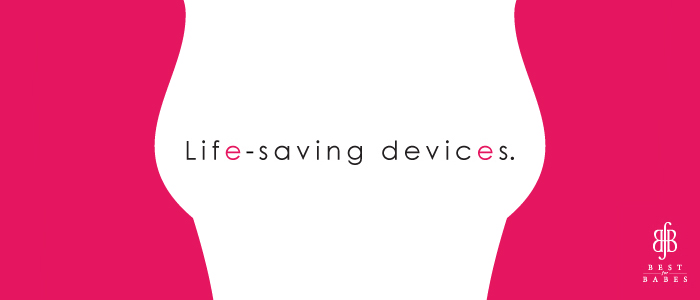--------------------------------
"Thou shalt beat him with the rod, and shalt deliver his soul from hell."
The Bible, Proverbs 23:14.
"I disapprove of flogging, although it is the regular custom... because in the first place it is a disgraceful form of punishment and fit only for slaves, and is in any case an insult, as you will realize if you imagine its infliction at a later age. Secondly if a boy is so insensible to instruction that reproof is useless, he will, like the worst type of slave, merely become hardened to blows... And though you may compel a child with blows, what are you to do with him when he is a young man no longer amenable to such threats and confronted with tasks of far greater difficulty? Moreover when children are beaten, pain or fear frequently have results of which it is not pleasant to speak and which are likely subsequently to be a source of shame, a shame which unnerves and depresses the mind and leads the child to shun and loathe the light....I will not linger on this subject; it is more than enough if I have made my meaning clear. I will content myself with saying that children are helpless and easily victimized, and that therefore no one should be given unlimited power over them."
Quintilian (circa 35 - 95 CE) from his "Institutes of Oratory."
Corporal punishment has been a topic of debate most likely since the beginning of recorded time. Columbia Electronic Encyclopedia (2009) defines corporal punishment as “physical chastisement of an offender.” Twenty-one states allow the use of corporal punishment on students. Proponents of this disciplinary action in schools are not in the majority of public and specialized opinion. The history of corporal punishment lingers in the past of slavery, acceptance of intimate partner violence, and pushes into the future of reliance on force to win power over others.
Corporal punishment treads a thin line between abuse and effective disciplinary action. According to Kauchak and Eggen (2005), in 1977 the U.S. Supreme Court ruled that corporal punishment in schools does not violate the Eighth Amendment to the Constitution, prohibiting cruel and unusual punishment. “The Court further ruled that states may authorize corporal punishment without prior hearing and without the prior permission of parents (Ingraham v. Wright, 1977).” The punishment should be used to correct behavior, not leave lasting injury, or be done out of anger, and may not be cruel or excessive. Each state has specific guidelines to what can be used to hit the child and how often a child may be hit in one session at school. One thing is clear about corporal punishment, if used, it should be used as a last resort.
Many people are against the corporal punishment of children in schools. The U.S. Department of Education Office for Civil Rights (OCR) released statistics for the 2006-07 breaking down data for corporal punishment by race and sex. The OCR found that 78% of the 223,190 students who received corporal punishment were male (Darden, 2009). After the OCR released these statistics, the Human Rights Watch and the American Civil Liberties Union did a study finding that minority and disabled students are disproportionately physically punished in schools (American School Board Journal, 2008). The states that allow corporal punishment are mostly in the south. Yet, excessive punishment can be seen anywhere in which violence is allowed. The following case exhibits just one instance of the line being overstepped.
“In one Pennsylvania elementary school, a 36 year-old, 6-foot-tall, 210-pound school principal paddled a 45-pound first-grade boy four different times during a school day for a total of 60 to 70 swats. After the incident the boy needed psychological counseling, cried frequently, and had nightmares and trouble sleeping. (Commonwealth of Pennsylvania v. Douglass, 1991)” (Kauchak & Eggen, 2005, p. 335).
Many in the United States want to see an end to this form of disciplinary action. It is too easy to overstep the boundaries of cruel and excessive punishment, especially if the local government and school district do not clearly define what is acceptable. It is also unclear if there is anything positive that results from corporal punishment, besides an immediate halt of specific behavior.
Corporal Punishment is an outdated form of disciplinary action that should be eliminated from the educational system. As a person who grew up in California, which banned corporal punishment in the 80s, I was shocked to find that children were still being paddled in school. I heard rumors while growing up of children in catholic school being hit on the knuckles with a ruler and was relieved that I was in public school protected from such horrifying events. It was bad enough I had to survive home life, adolescence, and societal pressures. What is even more shocking is that while we lived in North Carolina, I was completely unaware of the school's ability to administer corporal punishment on my own child. None of the student parent handbooks I read ever mentioned this. Corporal punishment has a lingering sentiment of religion to me. It reeks of God's ancient vengeance, and in doing so, reminds me of how Religion and State are meant to be separate in the United States. I completely understand that many Christians have a more peaceful stance on modern day society, yet for some reason the controlling and demeaning aspects of the Christian religion continue to affect our children. In addition, states continue to allow a form of disciplinary action that has no proven positive effect on our children. As a teacher, I would not use corporal punishment on my students, even if it were allowed or encouraged. I would not be able to make a clear differentiation between anger and violence and hitting for punishment. I choose not to perpetuate violence on our children.
Until we ban corporal punishment from all schools, whether or not one is for or against corporal punishment, we need to be clearly define boundaries for teachers and administrators to adhere to. Teachers nationwide are held accountable for their teaching methods. It may be reasonable to include students' emotional and physical well being into the whole picture of student success and teacher accountability. If we did so, we may see that corporal punishment causes more harm than good and move more quickly away from using it in the classroom. We all deserve to be treated equally under the law and as human beings with the ability to learn lessons and practice compassion.
References
(2009). Child Development. Work-Life Newsbrief & Trend Report, 5-6. Retrieved from Business Source Complete database.
(2009). Corporal punishment. Columbia Electronic Encyclopedia, 6th Edition, 1. Retrieved from Academic Search Complete database.
(2008). Corporal punishment still popular in many schools. American School Board Journal, 195(10), 7. Retrieved from Academic Search Complete database.
Darden, E. (2009). The Paddle Problem. American School Board Journal, 196(1), 39-40. Retrieved from Academic Search Complete database.
Kauchak, D., & Eggen, P. (2005). Introduction to Teaching: Becoming a Professional, 2e. Retrieved from University of Phoenix.












